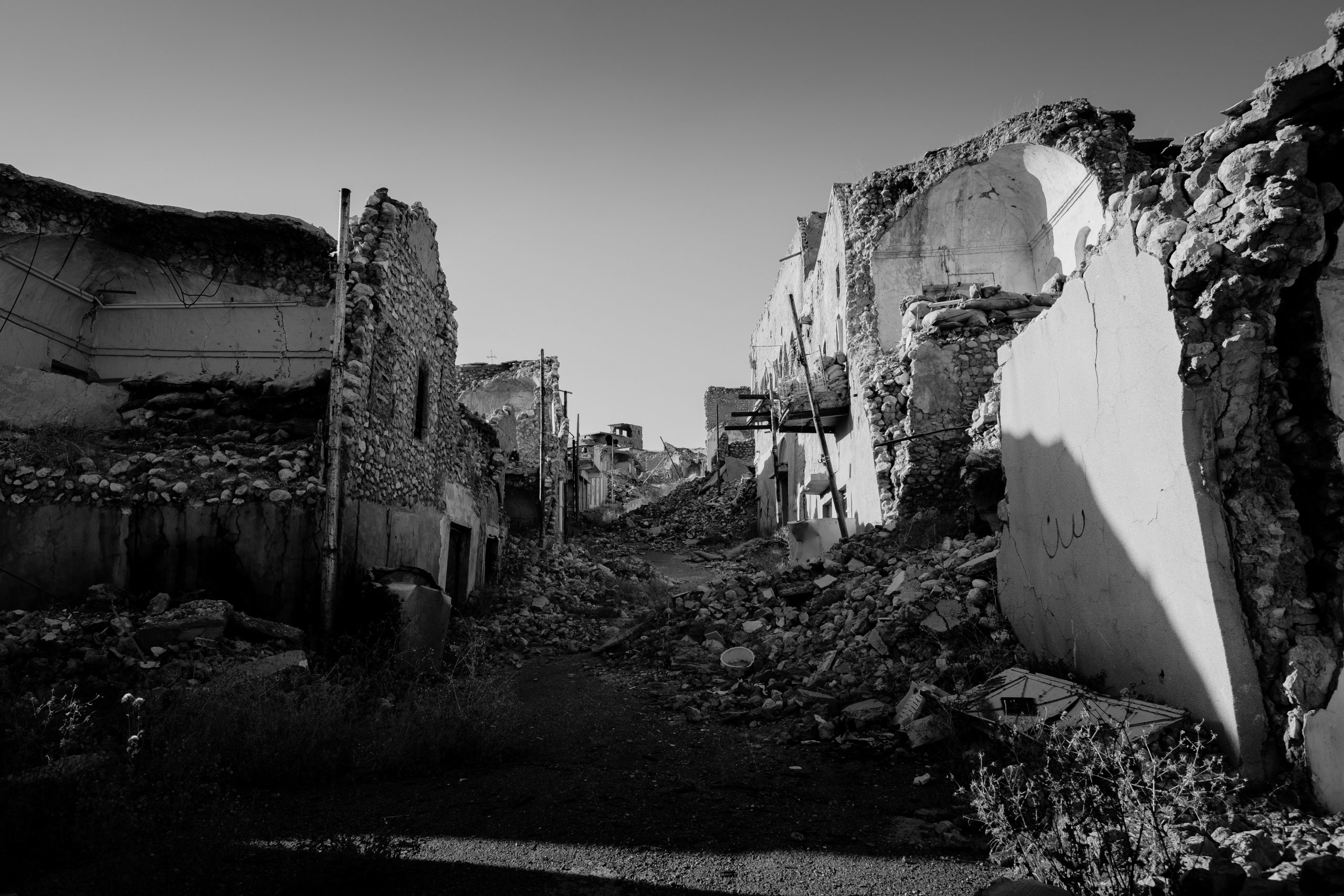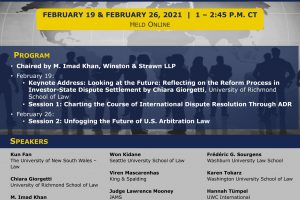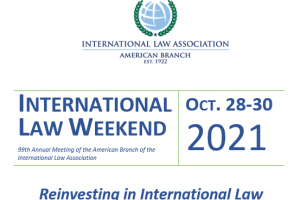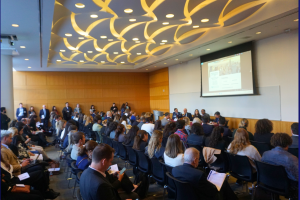Accountability Without Access: How Non-Military Actors Can Assess Conduct of Hostilities Violations (IHL Symposium)

Ruined side-street in Shingal (Sinjar) following the war with the Islamic State; Levi Meir Clancy
This piece is part of the American Branch’s third blogging symposium, examining the ILW 2025 theme of ‘Crisis as Catalyst in International Law’ from an International Humanitarian Law perspective. The International Humanitarian Law Committee sponsors this symposium; however, the views expressed in published works are solely those of the authors.
Accountability Without Access: How Non-Military Actors Can Assess Conduct of Hostilities Violations
by Ilya Ivanov*
Disclaimer: The views expressed here are those of the author and do not necessarily reflect the views or positions of the United Nations, the International Committee of the Red Cross, or any other organization with which the author is or has been affiliated. This post reflects only the author’s personal analysis, based solely on publicly available sources. None of the hypothetical examples refer to any specific conflict or investigation, in line with professional confidentiality obligations and in recognition of the need to avoid perceived partiality.
International humanitarian law (IHL) currently faces a two-fold crisis in conduct of hostilities (CoH): a perceived increase in CoH violations and a persistent lack of accountability. To address this, non-military actors, including scholars, NGOs, civil society organizations, and UN-mandated investigative bodies, are increasingly identifying possible CoH violations, often without access to territory or alleged perpetrators. Their work is essential in this context.
Military and state lawyers often criticize such approaches as inherently flawed, for instance, due to the lack of access to information available to commanders at the time of the attack. In this polarizing dynamic, the gap between the military and non-military perspectives on alleged CoH violations widens, even if some may disagree.
Drawing on practical IHL experience, I explore some criticism of non-military actors involved in CoH assessment and outline practical, good faith approaches for improving the credibility and legal rigor of such assessments. I focus on two issues: citing the applicable law and its interpretation, and relying on patterns rather than inferring violations from single instances.
In my suggestions, I attempt to strike a balance between the need for accountability and the reality of IHL as applied on the battlefield. By adhering to higher standards, we can ensure a more constructive dialogue between military and non-military actors, ultimately strengthening accountability for IHL violations.
Legal baselines and interpretative exercises
Do we cite the correct law?
Applying the law in CoH analysis brings two challenges: citing the applicable law and binding rules, and using the appropriate interpretation. If a party to the conflict does not consider the law we cite applicable or binding, why would they take into account our assessment of possible violations?
Citing the applicable law is, admittedly, a minor issue. The usual challenge is referring to CoH rules, well-codified in the Additional Protocol (AP) I , in cases where AP I is not applicable. The typical approach is to note that even if AP I is not directly applicable, it reflects some customary IHL (here on p. 11 or here on p. 28, ft 156). Relatively rarely do authors omit such assertions.
The situation can be more problematic when citing the ICRC’s Customary IHL Study and Database. Identifying custom is a difficult, time- and energy-consuming task – relying on IHL experts who spent almost a decade on the issue seems more efficient. However, the Study remains a non-binding document, containing what the ICRC believes to be customary IHL; authoritative, but not conclusive. Despite the ICRC’s rigorous analysis of the law and practice, the Study has attracted criticism from states and academics. Citing the Study without clarifying that it is not a source of law may easily backfire – especially if the party to the conflict disagrees with the ICRC’s views.
Here, knowledge of interpretations is key. When it comes to AP I, we know that it does not reflect all customary IHL rules on conduct of hostilities – at least not for all states. Even if it reflects custom, as often mentioned by the ICRC, a party to the conflict may openly disagree with such an understanding. Tracking these positions may help draw the attention of people responsible for accountability within the military.
Some divergence in interpretations is even more fundamental. If we consider the principle of military necessity, a cornerstone of IHL, a humanitarian may disagree with a military expert. Should we take a law enforcement-style approach, akin to human rights law (to simplify, ‘using only that amount of force which is necessary’, as suggested by the ICRC on pp. 78-82) or a definition used by the military (to paraphrase a manual, ‘using whatever is necessary as long as it does not violate the law’, p. 52)? If we decide to explicitly promote a more ‘humanitarian’ reading of the rule, a party to the conflict may disregard this and other findings.
It may be tempting to think that an accountability-focused report is a good place to develop the law. In most cases, it is not. Applying an unsettled, progressive understanding of a CoH rule may even make fellow IHL scholars judge the interpretation as overreaching – e.g., when suggesting that AP I, Art. 58 imposes an obligation on defenders to issue warnings (here, para vii). Unsurprisingly, this can trigger a backlash where other alleged violations, even if plausible, are dismissed as part of the same package.
When analyzing CoH violations, we often need to persuade those who hold conservative legal views. This does not mean trying to regress on the law. Instead, a balanced approach that cites what is in fact applicable, uses non-binding documents cautiously, and is aware of divergent views and interpretations is crucial. When not all facts are available, focusing on what is – the law and the legal views – is a good starting point. The party may or may not engage (although sometimes you may be surprised), but keeping dialogue open is key: it can lead to changes in behavior on the battlefield.
Patterns speak volumes
Getting the law right is the easier part. How do we establish the facts?
The ICRC/Geneva Academy Guidelines on investigating IHL violations recommend paying close attention to patterns. Many UN investigative bodies and others often refer to patterns, rather than single instances of violations. This is understandable: unless you are in a room with a commander, or the party to the conflict has released enough information on the attack, it is challenging to gather enough data from a single instance for a potential IHL violation, let alone a war crime.
Even in seemingly straightforward cases of violations, such as the use of chemical weapons or perfidy, single instances may not be enough to convince others. Prioritizing patterns improves the overall credibility of analysis and solves two problems related to investigations and resources.
Repeating acts under similar yet slightly different circumstances helps establish relevant facts and filter out noise. A few instances of using unguided weapons in an area with civilian and military targets, not far from a frontline or a contact line, are not necessarily a violation. We simply do not have enough information to make a decision. However, when this happens over months and years, especially when streets are busy, with limited military advantage gained in each attack but random civilian casualties mounting, and attacks often retaliatory in nature, you may start seeing a pattern of trying to spread terror among the civilian population – which may be a war crime.
The repeated nature of the attacks shows when and how (i.e., means and methods), and most likely who (or what type of actor) carried out the attacks, improving the understanding of what was in the mind of the attacker without necessarily establishing the intent. It paints a clearer picture of what is happening. Patterns sometimes hint at rules of engagement, whether explicit or implicit, and other operational modalities that are usually kept confidential. This may not be sufficient for a criminal investigation, but it may be enough for fact-finding purposes.
Analyzing patterns is also resource efficient. Limited resources and strict reporting timelines often constrain fact-finding missions, commissions of inquiry, and others. Hence, the standards of proof they choose are lower than for a criminal investigation, using instead ‘balance of probabilities’ or ‘reasonable grounds to believe’. Focusing on patterns allows one to achieve the necessary standard of proof efficiently (p. 52), without using excessive resources.
The rise of OSINT (open-source intelligence) has also made investigations more resource-efficient. It has broadened the fact-finder’s toolkit, from frequently updated satellite imagery to near real-time photos of attack sites, often gathered and verified through crowdsourcing and geolocation techniques. At the same time, it has created new challenges: deepfakes, staged audiovisual materials, data preservation issues, or simply a lack of expertise in digital forensics. Existing protocols and guidelines help mitigate some of these problems, but non-military actors may be constrained in their capacity to conduct thorough investigations. While long-term OSINT investigations have occasionally supported international judicial proceedings, fact-finders may find greater value in using OSINT to corroborate patterns of violations with additional evidence, rather than relying on it as the sole basis for establishing a single CoH violation.
Patterns are not a perfect solution and are prone to various issues, from bias and false positives to over-generalization. Patterns, importantly, do not always indicate policy. Note how Goldstone himself virtually retracted his views on the link between pattern and policy in Goldstone’s Commission report. However, the pattern was largely proven to the Commission’s standard of proof, even if the policy was not, demonstrating the former’s importance in analyzing CoH violations.
Focusing on patterns helps establish the relevant facts for a violation. It is particularly useful when resources are constrained, which is usually the case for non-military actors. Beyond that, observing patterns of violations for long enough can help change opinions – including those of (former) officials.
Attention to applicable law, divergent views, and patterns is no perfect recipe, but it reflects what works in international fact-finding. Despite all this, you may still be unable to prove a CoH violation. As frustrating as it can be, sometimes simply documenting is enough. This can start a conversation on whether IHL is adequately adapted to contemporary realities or nudge a party to the conflict to reflect on its operations. It can also be important for those affected. As a person from a country in conflict told me, ‘No one will be able to solve [this crisis], but at least it will be documented’.
 *Ilya Ivanov is a PhD Candidate at the University of Geneva, where he researches the legal value of non-binding norms in international humanitarian law and international human rights law. Recently, he served as a Legal Officer at the Office of the United Nations High Commissioner for Human Rights (OHCHR) and has held positions with the International Committee of the Red Cross, the World Food Programme, and the Human Rights House Foundation.
*Ilya Ivanov is a PhD Candidate at the University of Geneva, where he researches the legal value of non-binding norms in international humanitarian law and international human rights law. Recently, he served as a Legal Officer at the Office of the United Nations High Commissioner for Human Rights (OHCHR) and has held positions with the International Committee of the Red Cross, the World Food Programme, and the Human Rights House Foundation.



